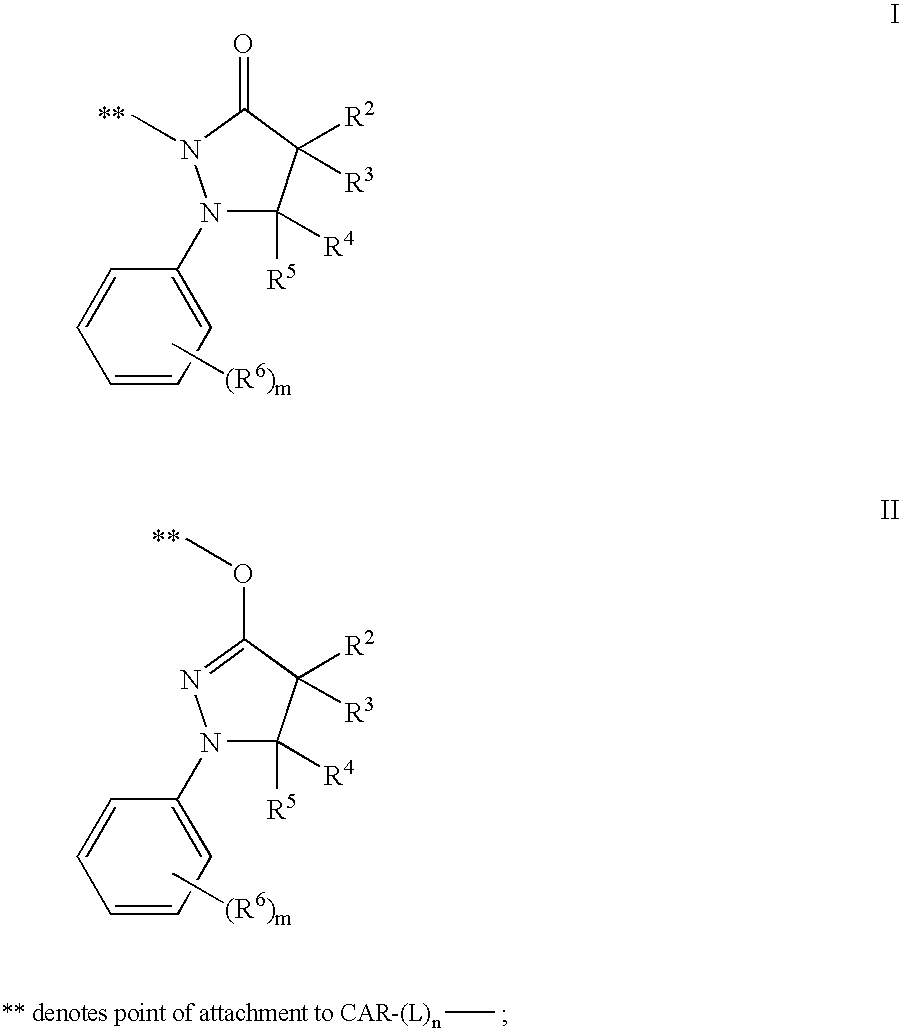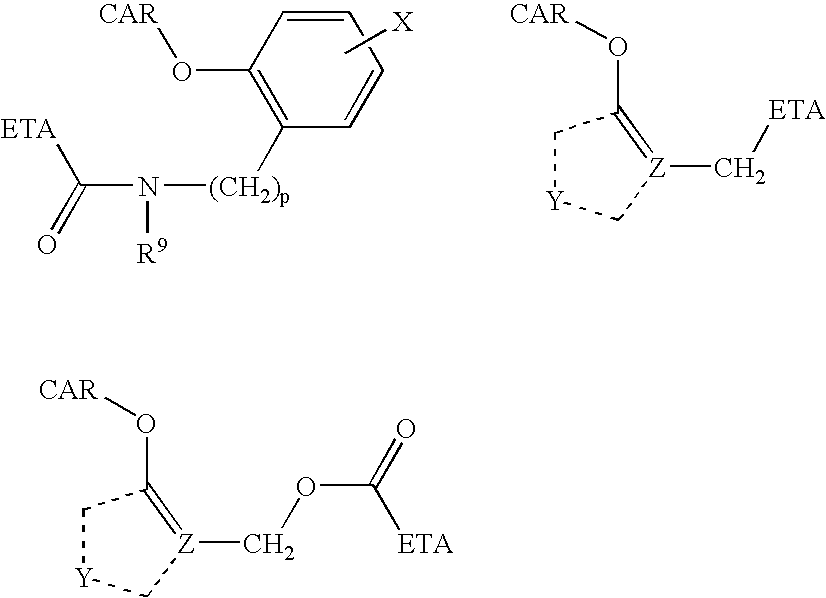Method of processing a photographic element containing electron transfer agent releasing couplers
a technology of electron transfer agent and photographic element, which is applied in the field of silver halide photographic element processing, can solve the problems of not alleviating the contrast mismatch problem, non-neutral changes in color balance, and affecting so as to reduce the development time, and improve the effect of color balan
- Summary
- Abstract
- Description
- Claims
- Application Information
AI Technical Summary
Benefits of technology
Problems solved by technology
Method used
Image
Examples
example 1
Preparation of Film Samples
[0104]Sample 1: A multilayer photographic element was prepared by forming the following layers on a cellulose triacetate film support:
[0105]
Layer 1: Antihalation LayerBlack colloid silver0.15 g / m2 as silverGelatin1.61 g / m2OxDS-10.081This layer also includes absorber dyes to ensure speed matches betweenlayer responses.Layer 2: First Red Sensitive Emulsion LayerSilver Bromoiodide emulsion0.65 g / m2(1.5% iodide, mean grain size 0.55 × 0.083 μm)Silver Bromoiodide emulsion0.48(4.1% iodide, mean grain size 0.66 × 0.12 μm)Coupler CC-10.55Coupler BA-10.086Coupler CD-10.034Gelatin0.79Layer 3: Second Red Sensitive Emulsion LayerSilver Bromoiodide emulsion0.34 g / m2(4.1% iodide, mean grain size 1.22 × 0.11 μm)Silver Bromoiodide emulsion0.43(4.1% iodide, mean grain size 1.07 × 0.114 μm)Coupler CC-10.27Coupler CD-20.038Coupler CM-10.016Gelatin1.130Layer 4: Third Red Sensitive Emulsion LayerSilver Bromoiodide emulsion0.86 g / m2(0 / 3.7% iodide, mean grain size 1.42 × 0.132 μ...
example 2
[0114]The above samples were processed in a Konica rapid process which is commercially available under the name QD-21 Plus Digital Minilab, film process cycle “ECOJET HQA-N.” and in the Kodak C-41 RA Process (See Example 3 for processing compositions).
[0115]
TABLE 1Comparison of Process C-41 and Process QD-21SolutionTime (Process QD-21)Time (Process C-41 RA)Developer1:403:15Bleach0:240:45Fixer0:471:30Stabilizer0:471:00
[0116]For each sample, the Lower Scale Contrast (LSC) of the red curve was measured from the point 0.15 in Status M density above the minimum density to a point with 0.4 Log H more exposure. The Mid Scale Contrast (MSC) of the red curve was measured from the point 0.4 Log H to 1.1 Log H more exposure from the point 0.15 in Status M density above the minimum density. The Status M density (above the minimum density) of the red record at 1.8 Log H from the point 0.15 in density above the minimum density was also measured (Over exposure density (OD)). Table 2 shows the abov...
example 3
[0122]Some of the above film samples were processed as follows in two different rapid process developers and in a comparative process, the KODAK C-41 Process. The KODAK C-41 Rapid Access Process steps of bleaching through final rinse were used for all three processes.
[0123]
TABLE 4Dev. TypeRP Dev HRP Dev NC-41Time (sec)(60)(60)(195)pH10.110.4210.07Temp48° C.44.6° C.37.78 C.MWgm / lgm / lgm / lHASHydroxylamine sulfate164.143.03.03.0Antical-8Diethylenetriamine503.262.62.62.6pentaaceticacid, sodium saltKIPotassium iodide1660.0040.0040.0012PVP(mer)Poly(vinyl pyrrolidone)111.143.03.0noneNaBrSodium bromide102.9nonenone1.3KBrPotassium bromide119.0122noneK2CO3Potassium carbonate138.21404037.5CD-44-(N-ethyl-N-2-hydroxy-292.3514.017.154.5ethyl)-2-methylphenylene-diamine sulfateK2CO3Potassium sulfite1589.010.0noneNa2SO3Sodium sulfite126.04nonenone4.0Rapid Process (RP)StepTime*AgitationRapid process developer55 + 5Nitrogen burst, 2 sec. on, 4 sec. OffKodak C-41 RA bleach40 + 5Continuous air bubblesWas...
PUM
| Property | Measurement | Unit |
|---|---|---|
| log partition coefficient | aaaaa | aaaaa |
| log partition coefficient | aaaaa | aaaaa |
| RI | aaaaa | aaaaa |
Abstract
Description
Claims
Application Information
 Login to View More
Login to View More - R&D
- Intellectual Property
- Life Sciences
- Materials
- Tech Scout
- Unparalleled Data Quality
- Higher Quality Content
- 60% Fewer Hallucinations
Browse by: Latest US Patents, China's latest patents, Technical Efficacy Thesaurus, Application Domain, Technology Topic, Popular Technical Reports.
© 2025 PatSnap. All rights reserved.Legal|Privacy policy|Modern Slavery Act Transparency Statement|Sitemap|About US| Contact US: help@patsnap.com



